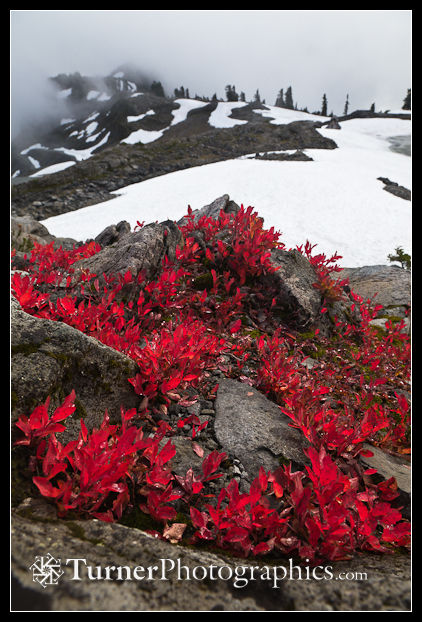Plant of the Month: Cascades Blueberry
 It’s not often that the Latin name of a plant tells us how tasty it is to eat. This month’s plant, Vaccinium deliciosum, has a name that does just that. Vaccinium is the genus for all the west coast blueberries and huckleberries. The species epithet, deliciosum, tells us that it has delicious berries.
It’s not often that the Latin name of a plant tells us how tasty it is to eat. This month’s plant, Vaccinium deliciosum, has a name that does just that. Vaccinium is the genus for all the west coast blueberries and huckleberries. The species epithet, deliciosum, tells us that it has delicious berries.
Cascades blueberry is a low-growing shrub found in sub-alpine and alpine meadows from British Columbia to California. It’s rarely much more than a foot tall and sometimes only about 4 inches. But what it lacks in stature it more than makes up in flavor.
Beginning in late summer the blueberries ripen to a deep rich blue, filled with sweetness. The plump fruits are usually about a quarter inch in diameter. In good years they’re abundant. The taste only gets better as summer turns to fall and the foliage takes on a brilliant red.
Besides being a tasty treat for humans, Cascades blueberries are a staple in the diet of black bears. It’s common to see piles of bear scat full of blueberry seeds and skins plopped randomly through a big blueberry patch.

That means that when you go out to pick blueberries you should keep your eyes open for bruin. I’ve never had a bear encounter in a blueberry patch, but I’d rather be cautious than surprised.
 My favorite place to pick Cascades blueberries is anywhere there’s a trail traversing a steep slope. That way I can pick on the uphill side of the trail without having to bend over very far. I usually eat the berries as fast as I can pick them, but other folks carry a bucket and bring their treasure home to make into pies, tarts, or jam.
My favorite place to pick Cascades blueberries is anywhere there’s a trail traversing a steep slope. That way I can pick on the uphill side of the trail without having to bend over very far. I usually eat the berries as fast as I can pick them, but other folks carry a bucket and bring their treasure home to make into pies, tarts, or jam.
I remember one Boy Scout backpacking trip to Lake Ann (the one near Mt. Shuksan) when one of the boys disappeared for a couple of hours, only to return with a Nalgene water bottle full of blueberries to go on his patrol’s breakfast oatmeal the next morning. That turned a mundane meal into something special.

